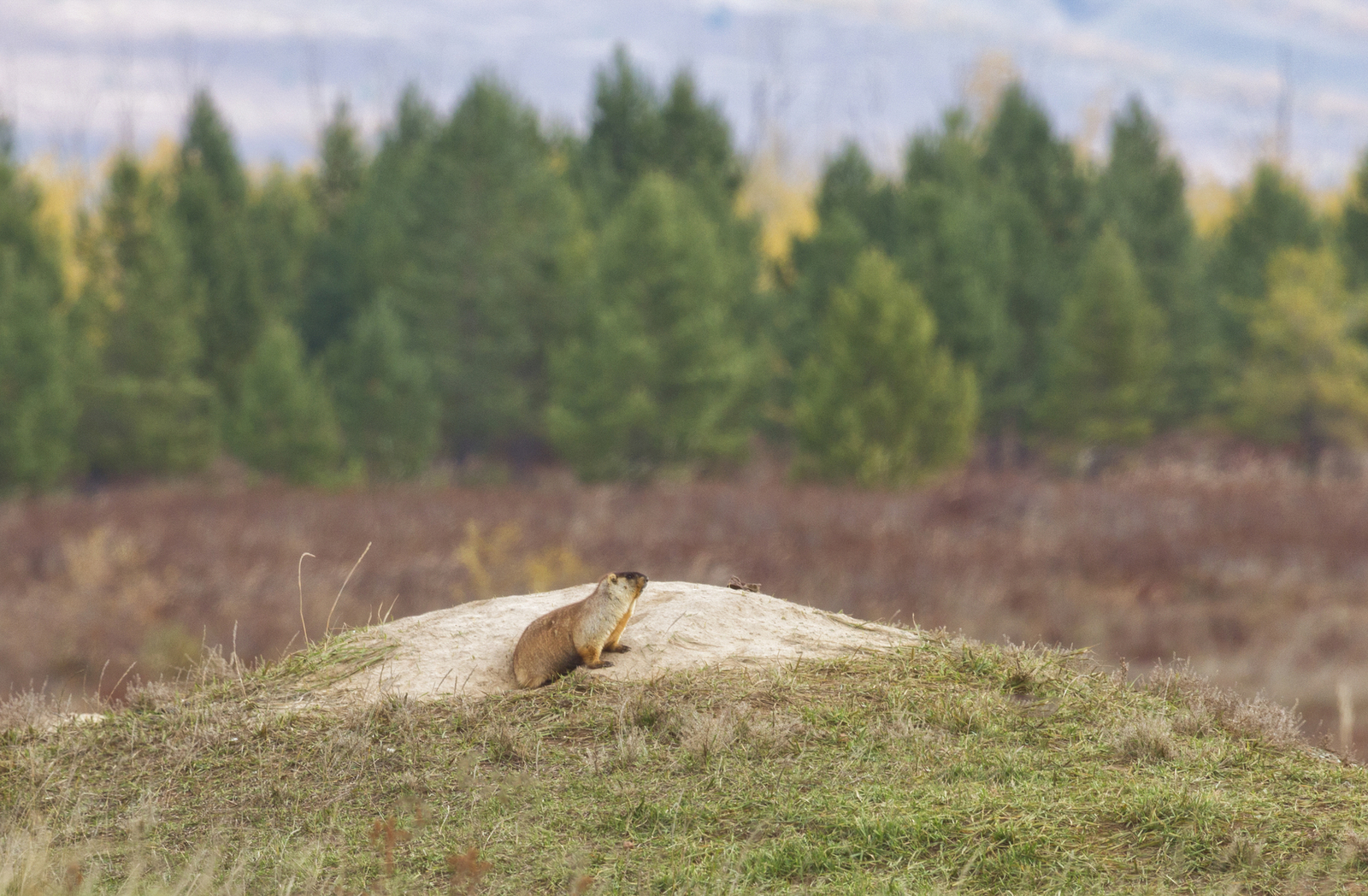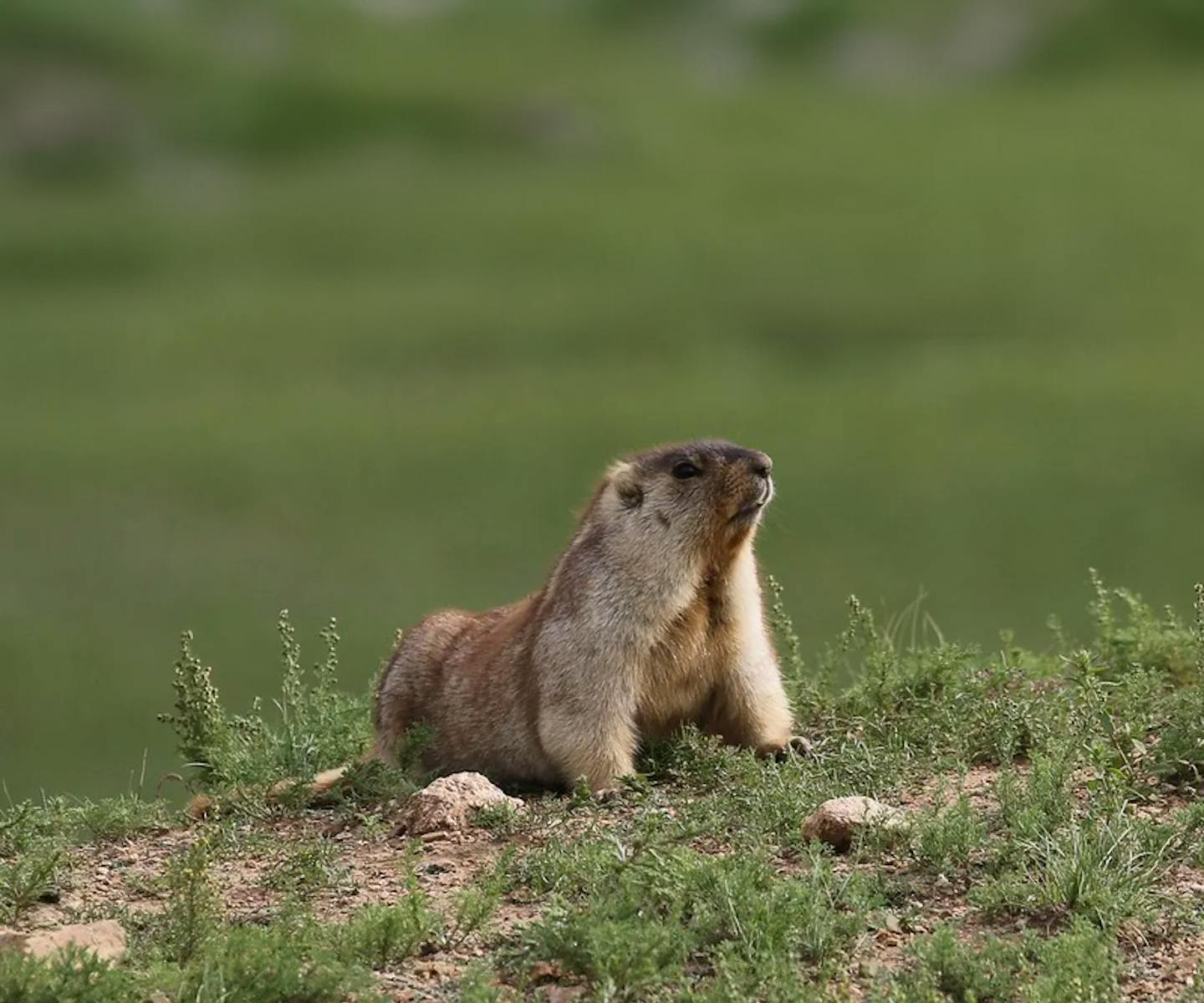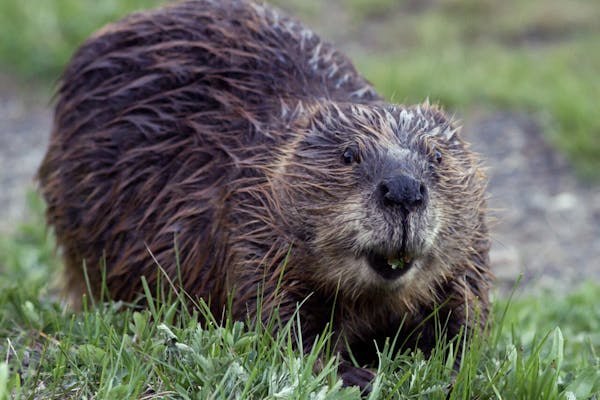Meet the Mongolian marmot: Keystone species of the steppe grasslands
- Nature Conservation
- Land Conservation
- Iconic Species
- Wildlife
- Mammals
- Eastern Eurasia Realm
- Mongolian Grasslands
One Earth’s “Species of the Week” series highlights an iconic species that represents the unique biogeography of each of the 185 bioregions of the Earth.
In the expansive Mongolian steppes, there lives a rodent that herders call Tarvaga. It is the Mongolian marmot (Marmota sibrica), also known as the Tarbagan or Siberian marmot, and among locals it is much more than a keystone species, as it shapes both the ecological balance and the cultural fabric of the region.
Physical traits, including adorable ears
The Mongolian marmot, a mammal native to the Mongolian steppes, boasts a fur-covered body and a distinct set of ears that add to its charm.
Typically, adults range from 9 to 12.5 centimeters (3.5–4.9 in) in length, and males tend to have relatively longer tails and larger cloacas than females, especially during the reproductive period.

Mongolian marmots are the iconic species of the Mongolian Grasslands, Alpine Meadows & Forest Steppe bioregion (PA44) located in the Mongolian Grasslands subrealm of Eastern Eurasia.
Burrowing architects that shape the steppes
These creatures, renowned for their exceptional burrowing skills, physically structure their grassland habitat with intricate networks of burrows, sometimes featuring over 90 entrances in large colonies. Mongolian marmot burrows provide crucial shelter for a diverse range of species, including meso-carnivores such as the corsac fox, Pallas's cat, and red fox.
This extensive burrow system significantly influences the distribution and abundance of vegetation, playing a vital role in maintaining the overall health of the Mongolian steppes.
Nutrient cycling and ecological impact
The Mongolian marmot's diet also helps shape their habitat. Feeding primarily on grasses and herbs, they contribute to the ecosystem's nutrient cycling, particularly during the summer months.
Their feeding habits help recycle nutrients within the ecosystem, further enhancing its vitality. The presence of these marmots is essential for sustaining the biodiversity and ecological balance of the region.

A Mongolian marmot keeping watch in the tall grasslands. Image credit: © Konstantin Menshikov | Dreamstime
Breeding and reproductive behavior
Breeding prolifically, females give birth to small litters, usually consisting of three to four pups. Gestation lasts for approximately 30 days, with pups typically born in late spring or early summer. These young marmots remain in the same burrow until the following spring or summer, adding to the intricate social structure of their colonies.
The sacred pack between Mongolian marmots and herders
In Mongolian folklore, the Mongolian marmot transcends its physical existence, embodying spiritual beliefs and cosmological significance. The marmot is believed to simultaneously be an animal, an animal with human meat (hün mah), a spirit being, a mythical tiny person, and a human-turned-to-marmot. Among Mongolian herders, you must always be ready to encounter any of these forms.
The Tarvaga and herders have coexisted for so long that they have formed a sacred covenant, requiring both parties to honor and care for their shared dwelling grounds. Disrupting this balance by either side can result in illness and death for all.
To maintain this marmot-human kinship, various rituals are performed in which marmots honor humans, and humans honor marmots—at least among those humans who still adhere to the ‘marmot playbook.’

The Mongolian marmot lies on a stone on autumn day. Image credit: © Shchipkova Elena | Dreamstime
Conservation status and challenges
The Mongolian marmot faces a myriad of threats, including habitat loss due to climate change, pollution, and illegal trade. Efforts by local organizations to protect critical habitats are underway, but concerted action is needed to mitigate the impact of human activities and ensure the long-term survival of these iconic creatures.
A call to action
As stewards of the Mongolian steppes, it is imperative to recognize the intrinsic value of the Mongolian marmot in both ecological and cultural contexts. Supporting conservation initiatives is a crucial step in safeguarding the delicate balance of the grasslands and preserving the legacy of this region's marmot for generations to come.
Support Nature Conservation


.jpg?auto=compress%2Cformat&h=600&w=600)

